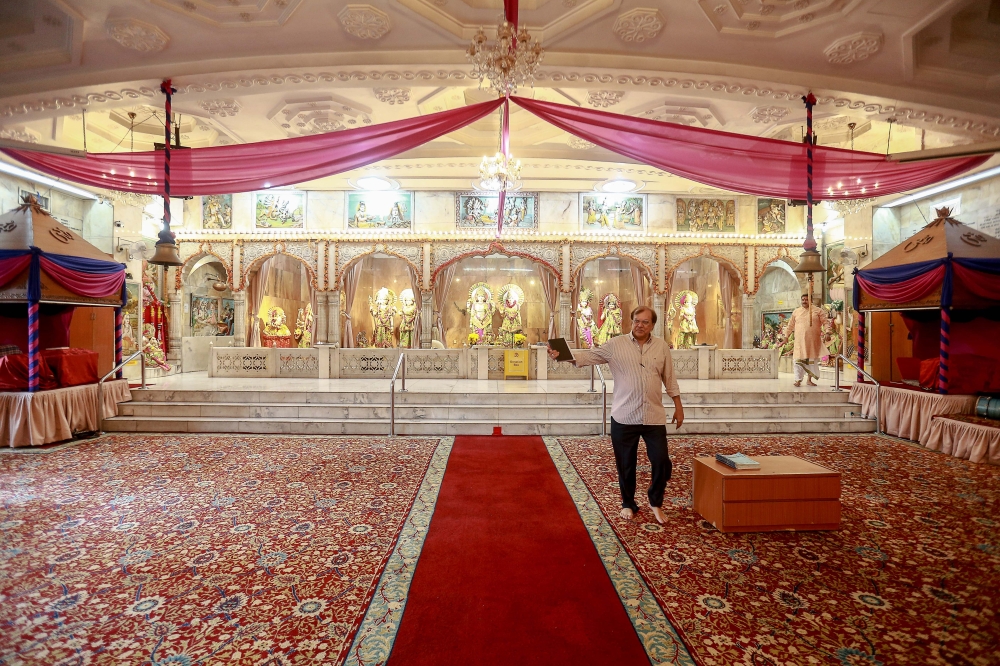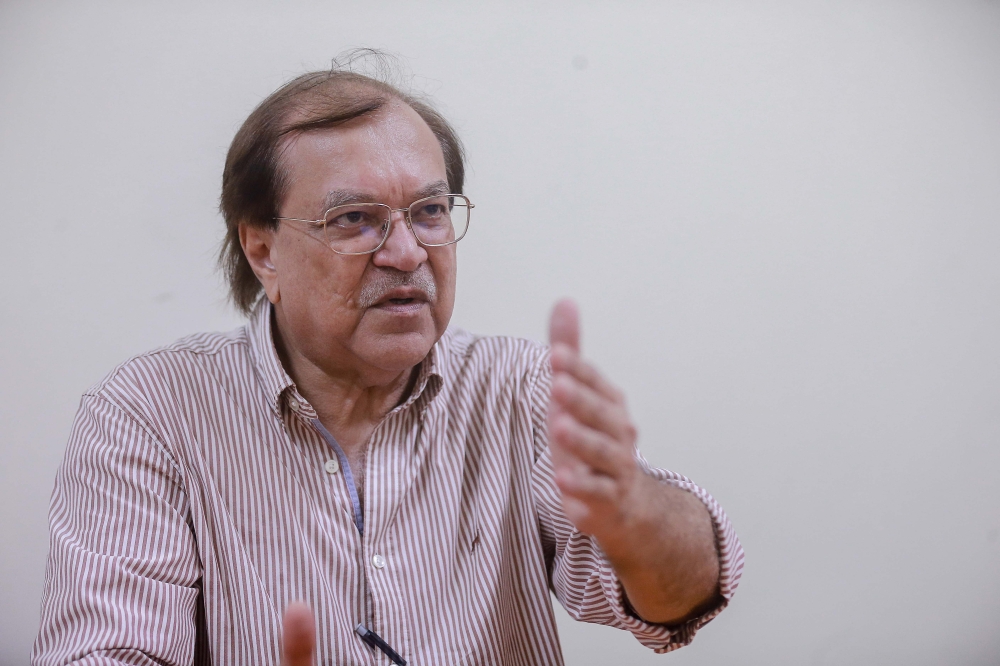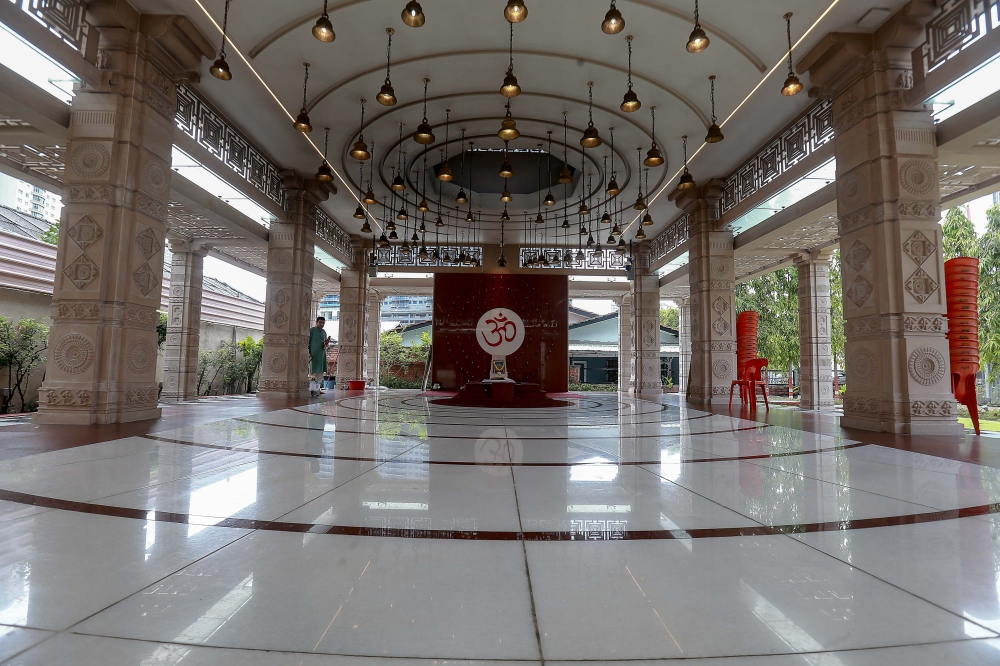KUALA LUMPUR, Sept 20 — The Shree Lakshmi Narayan Mandir, founded over a century ago, has always served as the focal point for a thriving North Indian community in Malaysia.
The North Indian community began settling in Malaya during the British colonial rule. While the Punjabi Sikhs were primarily recruited into the police and Armed Forces, the Punjabi Hindus, Gujaratis and Sindhis migrated to Malaya to ply their trade such as in textiles.
The Shree Lakshmi Narayan Mandir began as a place of worship at 6, Gombak Lane in Kuala Lumpur town centre in 1919. It was started by early traders with the pioneers being Kesarmal Khanijow, Amar Nath, Paras Ram Goel and Rakha Ram Sharma.
Temple trustee and former president Naveen Chander can still fondly recall his childhood where the community got together during religious festivals by the bank of Sungai Gombak in the 1960s.
“The temple already had a community kitchen by then to cook langgar (lunch) for hundreds of devotees.
“So, we would spread out mats and enjoy meals together by the river banks. It was literally like a picnic!
“The Sanatan Dharam Sabha, Kuala Lumpur was set up to act as the umbrella organisation to manage the Shree Lakshmi Narayan Temple. Similarly, the Krishna Temple in Ipoh and the Shiv Temple in Taiping were managed by their respective Sanatan Dharam Sabhas.
“So, the devotees would travel to Ipoh for Janmashtami (birth anniversary of Lord Krishna), to Taiping for Maha Shivratri (annual celebration for Lord Shiva) and gather here in KL for Ram Navami (birth anniversary of Lord Rama).
“That’s how the North Indian community intermingled back then in the early years” Naveen told Malay Mail.

While the temple community was primarily made up of Punjabi Hindus during the early years, the Gujarati and Sindhi communities eventually joined the temple, making it a religious and cultural haven for the larger Hindi-speaking North Indian community.
A Hindi school was also set up next to the temple for young children to learn the language and other classical arts.
In 1971, the temple was relocated to a smaller rented house at Kampung Kasipillay to make way for major redevelopment plans at the city centre.
In the late 1970s, the temple’s then president Datuk Makhanlal Saigal helped acquire a plot of prime land in Jalan Kasipillay, where the temple was constructed during 1979-1981 and consecrated in March,1982.

“Since 1982, we have celebrated our annual consecration anniversary with a mahabhishekam on the first Sunday of every March.
“Some of our biggest festivals are Ram Navami, Janmashtami and Navratri (nine nights celebrating the forms of the Goddess Devi) which draws over 1,000 people daily to the temple every year.
“Our youth wing also hosts Holi celebrations, where we have thousands of people including tourists come over to play with the colours.
“The temple also hosts regular prayer programmes including the teachings of Bhagavad Gita every Sunday morning. Our kitchen prepares langgar for 300 to 500 people each Sunday.
“On Tuesday evenings, devotees congregate to recite the Hanuman Chalisa and the Ramayana, followed by dinner,” he said.
The temple, he said, currently also has two halls — the Datuk Makhanlal Saigal Hall and the new Raj Bagri Hall — which are open for weddings and other cultural events.
Besides catering to religious needs, Naveen said the temple also conducts various welfare activities including free medical screenings, flood relief work and distributing food aid to places as far as the East coast.

Chartering the next chapter
Meanwhile, Shree Lakshmi Narayan Mandir president Nirmal Kumar Nandrajog, 71, said the temple aspires to become a socio-cultural and religious centre, not just for the North Indian community but also the larger Hindu community.
The temple, he said, is currently undergoing a three-phase expansion in line with this aspiration. The expansion and redevelopment works began in 2017 led by late president Sosheel Sharma and funded by generous devotees.
“We have completed the first phase, which consists of the grand Raj Bagri banquet hall and a serene meditation pavilion, which is suitable to conduct havan (fire rituals) and traditional Hindu weddings.
“The second phase will entail the construction of a new office block, a concourse at the ground floor and revamping the first floor.
“The third phase will focus on refurbishing and expanding our prayer hall,” he explained.
Nirmal said the temple currently employs three priests, three full-time administration staff and seven general workers for their day-to-day operations.
Besides providing prayer services for marriage and death anniversaries, Nirmal said the priests also conduct pujas and prayers at the homes of devotees upon request.
Naveen said ultimately, the temple’s guiding principle is seva — voluntary service – where devotees selflessly serve the community without expecting anything in return.
“Our focus is not just on the teaching and propagation of religious texts. We also need to put the wisdom we learn in action by serving the community,” he said.






















